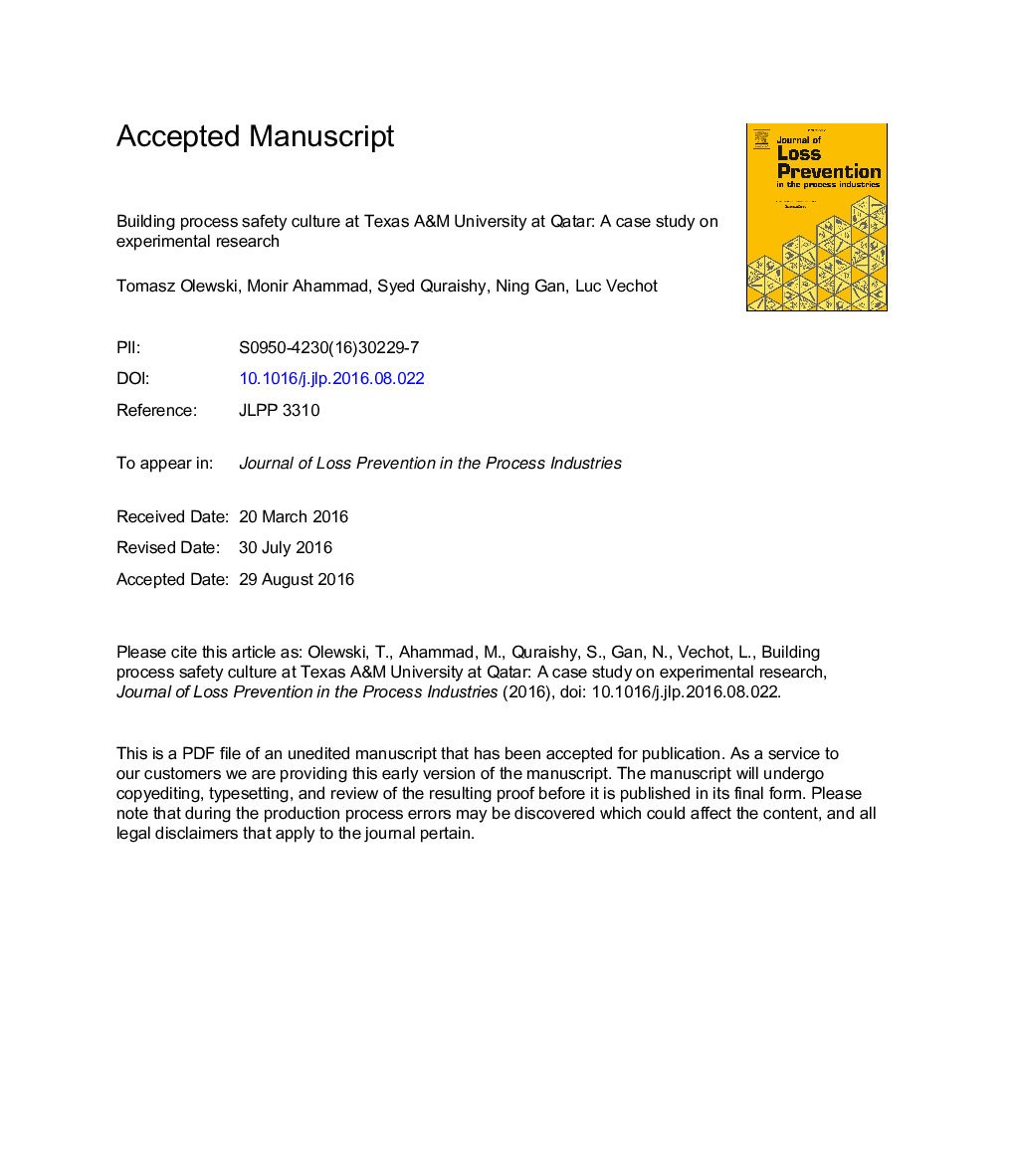| Article ID | Journal | Published Year | Pages | File Type |
|---|---|---|---|---|
| 4980413 | Journal of Loss Prevention in the Process Industries | 2016 | 33 Pages |
Abstract
The objective of this paper is to provide a case study on building process safety culture in a research environment by applying different key aspects of process safety principles. In this study, a series of experiments were analyzed to show how process safety principles starting from inherently safer design and management program can be learned while performing experimental research. The authors have found that investigating the root causes of near misses have multiple benefits. During the actual experiments, no injuries have occurred and even the potential of having injuries was relatively low. However, in the context of this study, selected issues were investigated as accidents, which referred to not being able to successfully perform the experiments and near-miss which referred to the delay of a planned/scheduled experiment. As a matter of fact, all these issues may be treated as time and financial losses. Different types of failures such as human factor, process design or inherently safer design and standard operating procedures were discussed via case studies. It was found that having students discussing and presenting the investigation results to other students has greatly improved not only the safety aspects of research but also the productivity and safety culture of the involved researchers.
Related Topics
Physical Sciences and Engineering
Chemical Engineering
Chemical Health and Safety
Authors
Tomasz Olewski, Monir Ahammad, Syed Quraishy, Ning Gan, Luc Vechot,
